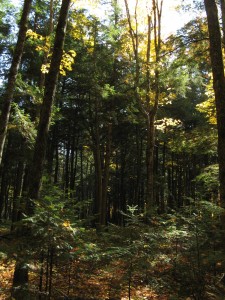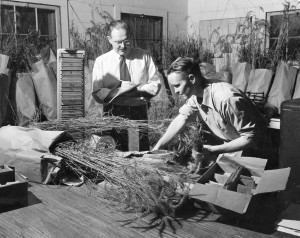
Tourists flock to the forests and lakes of northern Wisconsin, happy to vacation in a region that remains primarily forested.
But UW-Madison botany researchers know these iconic forests have changed in many substantial and, sometimes surprising ways over the past half century.
Pines, hemlocks, birches, and red oaks have all declined substantially.
In their place, maples, ashes, and cherry trees are more abundant.
In the understory, plants are now less diverse, both within sites and among sites, with increases in grasses, sedges and certain ferns masking declines in many of the state’s pretty wildflowers like rosy twisted stalk and blue-bead lily.
How do we know this? It's a surprising story in the university's history.
It starts in the 1940s and 50s, when Botany Professor John Curtis - the department's first and most famous plant ecologist - commissioned a bright group of students to fan out across the state. The students gathered data from the best remaining plant communities to test ideas about how plants are distributed in relation to gradients in light and soil conditions.
Their work, summarized in Curtis’s classic book which is still in print, The Vegetation of Wisconsin, stands as a remarkably complete description of the state’s vegetation at the time.
But perhaps even more importantly, the records they kept, carefully archived in the Plant Ecology Records Room in Birge Hall, now provide a uniquely detailed baseline for measuring ecological change.
Curtis's work continues today.
His successor, Botany Professor Don Waller, and his research group now return to many of the same sites 50-60 years later, taking similar data on trees, understory plants, and local site conditions.
Waller's team recently published a paper in the journal Biodiversity Research, led by post-doctoral fellow, Katie Amatangelo and former student Dave Rogers (now at UW-Parkside).
So what is causing these changes?
Fire suppression may favor invasions of moisture-loving forest plants into historically drier sites, while overabundant deer are limiting regeneration in hemlock, yellow birch, red oak, and white pine.

As these trends continue, maples will come to dominate our northern forests as local native understory plant species continue to decline and shift towards grassy species.
"Without the marvelous work and careful records of John Curtis and his students, we would not even be aware of these substantial changes in the quality and diversity of our forests” says Waller, adding, “Fortunately instead, we have a remarkably detailed picture of ecological change in these forests.”
Waller has summarized results from these re-surveys along with similar work from colleagues across a broad range of biological disciplines in the book he edited with former PhD student and post-doc Tom Rooney, The Vanishing Present: Wisconsin’s changing lands, water, and wildlife.
